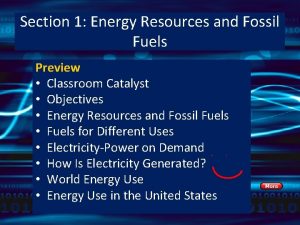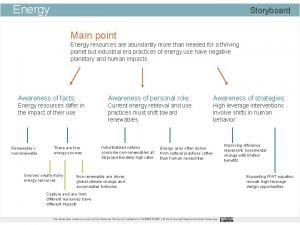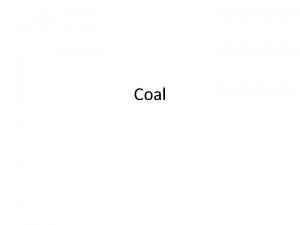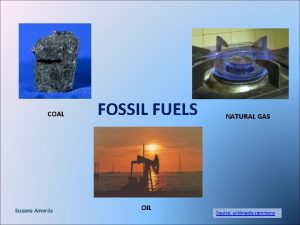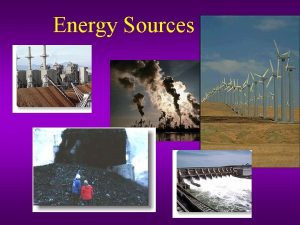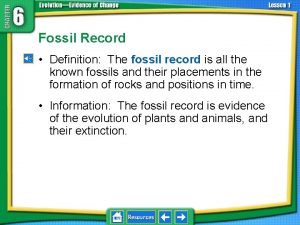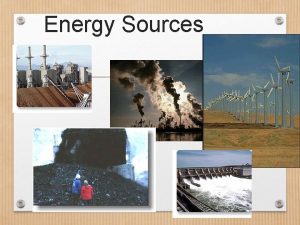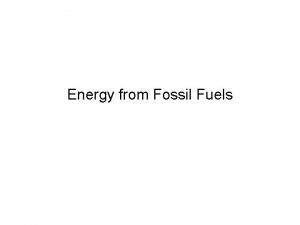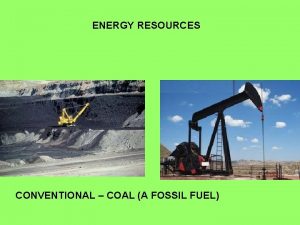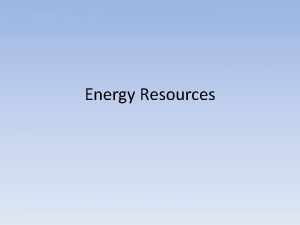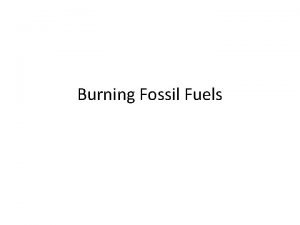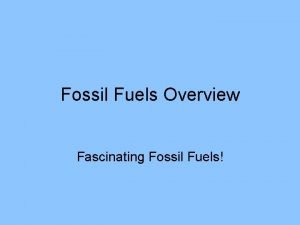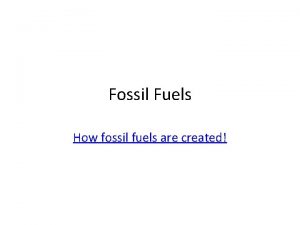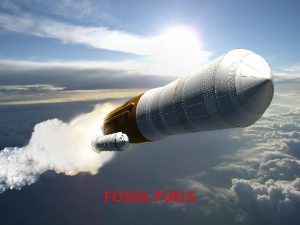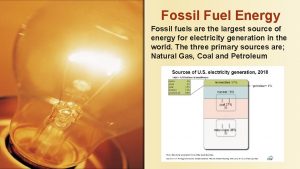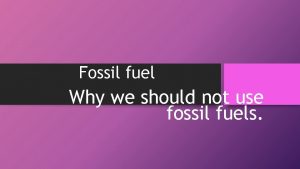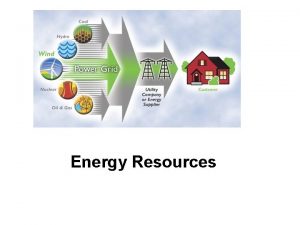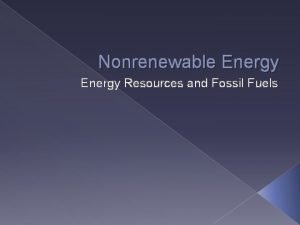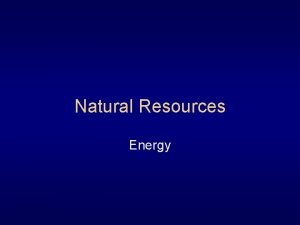CURRENT PERSPECTIVES ON FOSSIL FUEL RESOURCES Fusion Power






























- Slides: 30

CURRENT PERSPECTIVES ON FOSSIL FUEL RESOURCES Fusion Power Associates 25 th Anniversary Meeting and Symposium December 13, 2004 John Sheffield Joint Institute for Energy and Environment University of Tennessee

FOSSIL FUELS INCLUDE • • Coal Lignite Peat Conventional Oil Heavy Oil, Oil Sands, and Shale Oil Gas and Natural Gas Liquids Methane Hydrates


FOSSIL FUELS ARE INTERCHANGEABLE • All fossil fuels may be both gasified and converted to liquids. • Consequently, all of the fossil resources should be included when we consider availability for a particular purpose e. g. transportation or electricity production.

RUNNING OUT OF AND INTO OIL • David Greene et al (ORNL and U. Tennessee) have analyzed global oil depletion up to 2050 for a number of scenarios. http: //wwwcta. ornl. gov/cta/Publications_2003. html • They consider both conventional and unconventional oil resources. 1 Gtoe = 7. 33 billion barrels. • ROW conventional oil production may peak in 2010 - 2030. Including OPEC around 2030 - 2050. To meet demand, the difference will be made up from unconventional oil







CONCLUSIONS OF GREENE’S PAPER • Present trends imply ROW conventional oil peak in period 2010 - 2030. • Transition to unconventional oil may be rapid: 79% growth. • First suppliers from Venezuela, Canada, Russia. • Vast quantities of shale oil (or coal, NG) may be needed before 2050 - notably in high demand case.



COAL AND NATURAL GAS • From talk by Rita Bajura (NETL) at the NRL - Energy Options for the Future meeting www. • World recoverable coal reserves 1, 083 billion tons - 210 -year supply at current use. • Coal is mainly used for electricity production - 92% in U. S. and 66% in the World. • Issues of mine safety and environmental impact.







ADVANCED TECHNOLOGIES FOR COAL USE • DOE’s goals: • Improved efficiency • NOx and SOx removal • Mercury removal • CO 2 sequestration. • Integrated Gasification Combined Cycle (IGCC) is a promising pathway to “Zero. Emission” Plants


NATURAL GAS • World proven natural gas reserves 5, 500 Tcf - 62 -year supply at current use rates (Hydrates? ). • Cleanest fossil fuel. • Rapid rate of increase in use. • Price is volatile. • In U. S. 24% for electricity, 32% in industry, and 44% other. • In World 36% electricity, 23% industry, and 41% other.






CONCLUSIONS • There is a lot of fossil fuel. Needed investment an issue. • Uncertainty in total recoverable amount - issue of unit cost. • Likely they will be major part of U. S. and Global energy mix for at least the next 50 years. • Uneven distribution and pollution are major problems. – Carbon sequestration at scale envisioned is still a young technology – Near-zero emission technologies (NOx, SOx, CO 2, Hg) will be necessary to secure long-term future for coal.
 Section 1 energy resources and fossil fuels answer key
Section 1 energy resources and fossil fuels answer key Fossil
Fossil Fossil fuel storyboard
Fossil fuel storyboard What is the most abundant fossil fuel
What is the most abundant fossil fuel How does fossil fuel produce energy
How does fossil fuel produce energy Pros of fossil fuels
Pros of fossil fuels Advantages of using oil
Advantages of using oil Fossil record definition
Fossil record definition Coal is a solid fossil fuel formed from plant remains
Coal is a solid fossil fuel formed from plant remains Advantages of fossil fuels
Advantages of fossil fuels Is petroleum a fossil fuel
Is petroleum a fossil fuel Real power formula
Real power formula Who discovered uranium
Who discovered uranium Texas instruments fusion digital power designer
Texas instruments fusion digital power designer Fusion power associates
Fusion power associates Fusion power associates
Fusion power associates Fusion power associates
Fusion power associates Y connected generator
Y connected generator Difference between phase voltage and line voltage
Difference between phase voltage and line voltage Drift current and diffusion current
Drift current and diffusion current Lesson 4 three-phase motors
Lesson 4 three-phase motors Drift current and diffusion current
Drift current and diffusion current Intrinsic semiconductor
Intrinsic semiconductor The constant current region of a jfet lies between
The constant current region of a jfet lies between Balanced wye-wye connection
Balanced wye-wye connection Infineon
Infineon Diffusion current density
Diffusion current density In alternators the welding current is produced on the
In alternators the welding current is produced on the Hazard based safety engineering
Hazard based safety engineering Mesh current method with current source
Mesh current method with current source Difference between transforming and transformed resources
Difference between transforming and transformed resources
